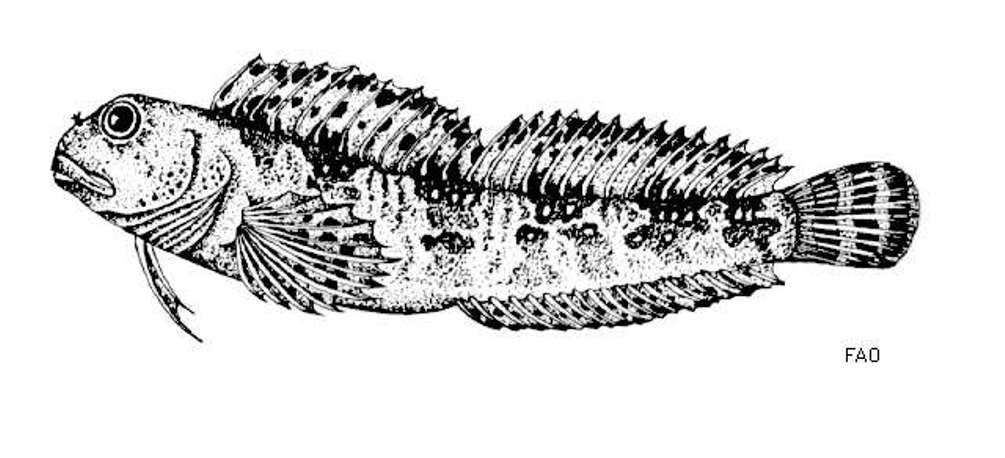Lipophrys trigloides
Lipophrys trigloides
The combtooth blenny (Lipophrys trigloides Valenciennes, 1836) is a saltwater fish belonging to the Blenniidae family.
Systematics –
From a systematic point of view it belongs to:
Eukaryota Domain,
Kingdom Animalia,
Subarign Eumetazoa Bilateria,
Superphylum Deuterostomia,
Phylum Chordata,
Subphylum Vertebrata,
Infraphylum Gnathostomata,
Superclass Osteichthyes,
Actinopterygii class,
Perciformes order,
Suborder Blennioidei,
Blenniidae family,
Genus Paralipophrys,
P. trigloides species.
The terms are synonymous:
– Blennius trigloides Valenciennes, 1836;
– Lipophrys sabry Bath, 1983;
– Paralipophrys trigloides Valenciennes, 1836;
– Pholis trigloides Valenciennes, 1836.
Geographic Distribution and Habitat –
Lipophrys trigloides is a fish found in the eastern Atlantic along the coasts of France (Brittany), the Iberian Peninsula, Morocco, the Mediterranean and the Sea of Marmara southwards to Senegal, the Canary Islands and Madeira. It is common in the Mediterranean Sea and on the Italian coasts, quite common in the Tyrrhenian Sea and in the seas of Sicily, while it is rarer in the Adriatic. It is absent in the Black Sea.
This species is strictly coastal and never goes down to more than 1 m of depth; it lives among the rocks and algae, often in the tidal zone. Withstands a very long time (even 10 hours) out of the water.
Description –
Lipophrys trigloides is a fish with a maximum length of around 12 cm, on average between 8 and 10 cm, with bare skin and evident lateral line.
The background color of this fish is more or less light brownish and more or less tending to ocher; there are dark vertical bands, more evident on the back and more faded in the ventral area. Light and dark spots and spots are arranged on the body, fins and head. In summer, the breeders have a bright red rim on the anal fin.
It has a stocky body, with a less elevated caudal peduncle than the other species.
The head is massive, with the anterior profile of the snout inclined forward (like the triglids). The eyes are located very high and the dorsal arch, on which there are 3-5 tuberculets, protrudes from the profile of the head. It does not have superciliary tentacles, but has dermal appendages on the anterior nostrils, which end in a fringe of short and thin filaments.
The mouth, in the lower position, is not very wide and is equipped with full lips. Present small and cylindrical-conical teeth, followed by curved canines.
It has a single dorsal fin which is divided by a deep hollow. The anal is long and begins with two very small tuberculous spines. The caudal has a rounded posterior margin. The pectorals are broad and the ventral ones are filiform.
The larvae have bright yellow pectoral fins with dense black dots.
Biology –
The combtooth blenny has a period of reproduction in the period of March.
The larvae have a pelagic life.
Ecological Role –
Lipophrys trigloides is a very suspicious fish that takes refuge in a cavity as soon as it is disturbed, moreover it frequently comes out of the water on summer nights and can stay there, as mentioned, without damage for up to 10 hours.
It is a carnivorous fish that feeds mainly on crustaceans.
Guido Bissanti
Sources
– Wikipedia, the free encyclopedia.
– Louisy P., 2016. Guide to the identification of marine fish of Europe and the Mediterranean. Il Castello Editore, Milan.
– Nikiforos G., 2008. Mediterranean fauna. Giunti Editore, Florence.
Photo source:
– https://uol.de/icbm/geooekologie/giglioexkursion-1/die-marinen-arten/artensteckbriefe-a-c/alcyonium-coralloides-3-31-8-9-7


